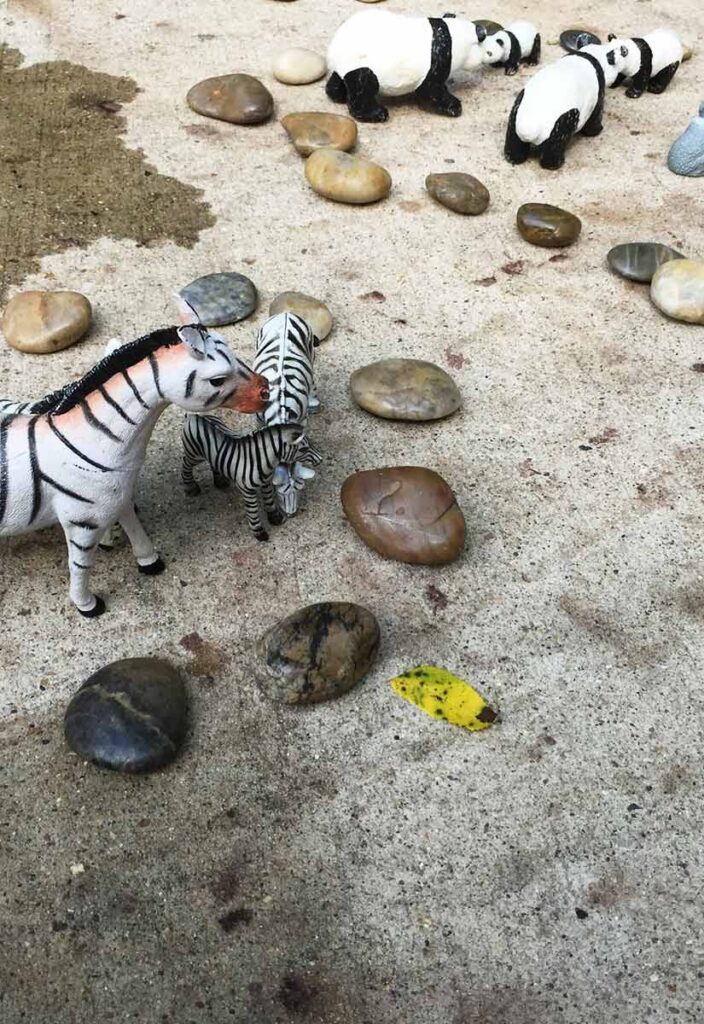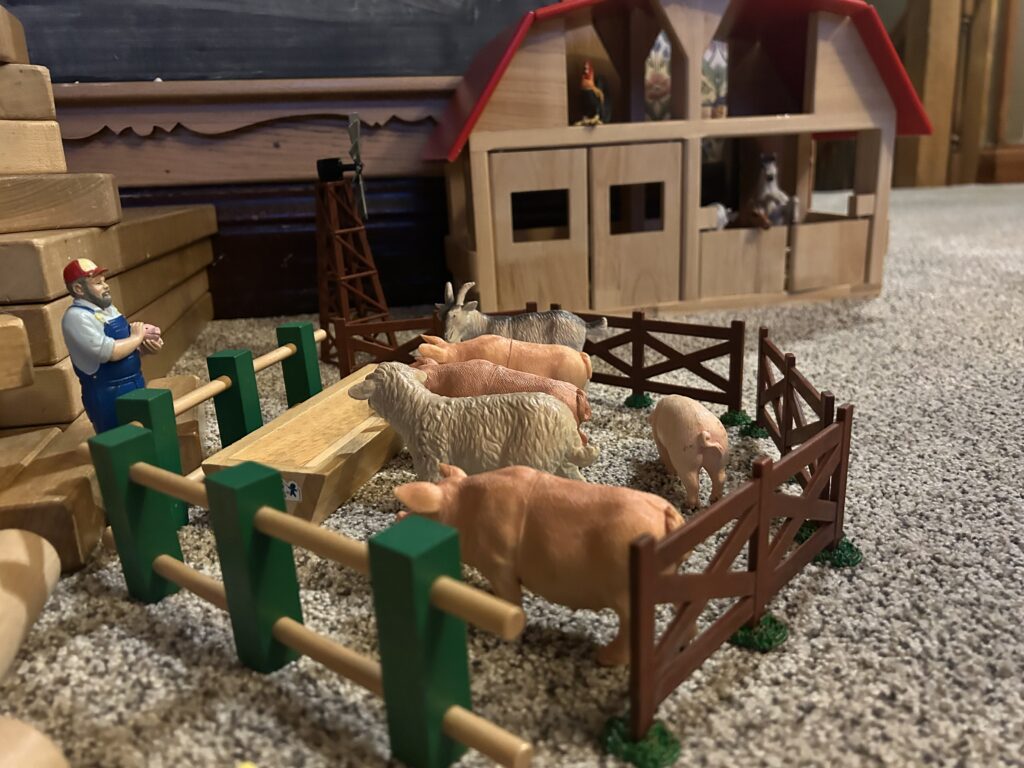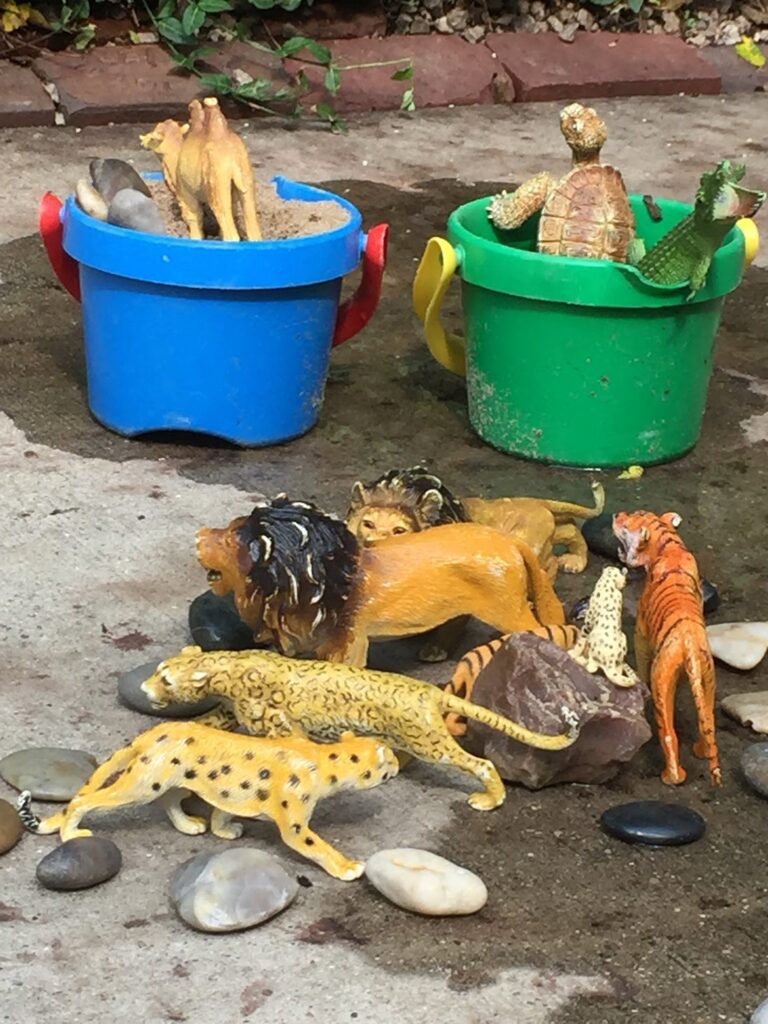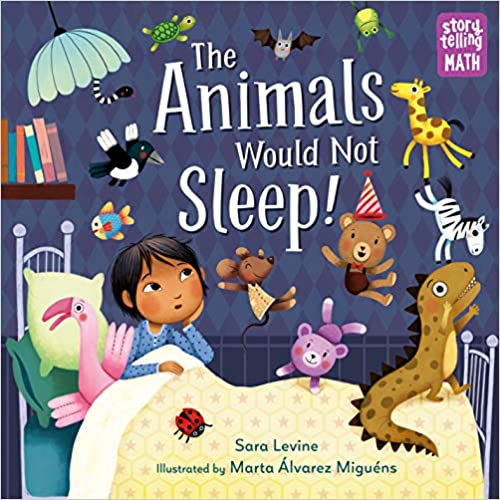Playful Adventures With Animal Figures

“Are you making a zoo?” Rosalie asks Gabriel.
“I am making families, but we could make a zoo!" Gabriel answers. "Want to help me?”
Research shows that animal figures score higher than any other type of toy for stimulating creativity, imagination, social interaction, and verbalization in young children. This holds true for girls and boys, as well as children from diverse backgrounds. As parents, we know that animal figures are among the most frequently chosen toys in our children's play rotations, so it's reassuring to know that they are not only fun to play with but great for hands-on learning!
Baskets filled with animal toys fire up the imagination because they don't come with restrictive rules or instructions about how to play with them. When children play with toys such as small animals, people or vehicles, they are free to create elaborate, make-believe scenarios as they engage in rich conversations and play cooperatively with their friends.

Children naturally engage with animals in unique ways that foster creativity and imagination. Through imaginative play, they explore and learn about the world and develop their critical thinking and problem-solving skills.
At all ages, children classify objects intuitively to make sense of the world. At only two weeks of age, infants can already distinguish between objects that they suck on and other objects. By the age of two, toddlers can form sets of similar objects. Preschoolers can sort and categorize objects according to a given attribute.
When children engage in classification, they sort objects according to some established criteria. It doesn't matter how they group them. Classifying objects allows children to first decide how they want to identify and name the attributes that the items in a group will have in common. This is math!

Animal toys set the scene for make-believe play, inspiring young children to make up fun storylines for their animals. This nurtures the development of imagination, narrative thinking and creativity.
Acting out scenarios for the toy animals will do wonders for children's language development, communication skills and vocabulary as they explore new sounds, words and phrases they may not use in everyday life.
We are big fans of the children's book author Sara Levine and her many science books, so I knew we were in for a treat when I saw that she was one of the authors in the Storytelling Math series.
In Levine's book, The Animals Would Not Sleep!, it’s bedtime for Marco and his animal friends, but the animals will have none of it. When Marco tries to put them away, they fly, swim and slither right out of their bins. Marco tries sorting the animals in different ways, but nothing works and the animals start getting cranky. How can Marco make all of the animals happy and put an end to the mayhem? Marco thinks like a scientist to come up with a solution. This is one of our favorite books that will stimulate plenty of discussion and help build problem-solving skills.

Keep your animal figures in a small basket or tray for easy access. I like to keep them near the blocks, but bathtubs, bottom kitchen drawers, the backyard sandbox, or anywhere else your child can access them is best.
Many children will dump the animals out of the basket and group the animal figures into categories. This is a good time to sit back and observe the different ways that your child categorizes the animals. Your child may group by animal species, size or color; count the animals; create a zoo; or set up animal habitats in the "wild." Young children may also group animal families together or use them to act out their favorite stories.
Why spend money on expensive "tech toys" when everything your child needs for an open-ended, hands-on learning adventure is in that simple basket of animals? Pull it out and let the learning begin!